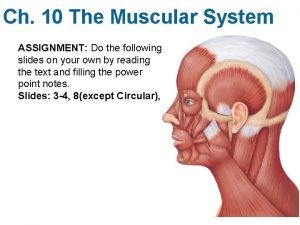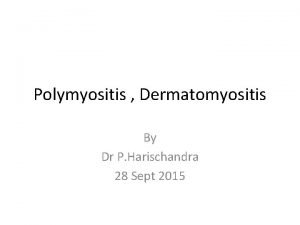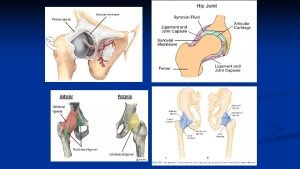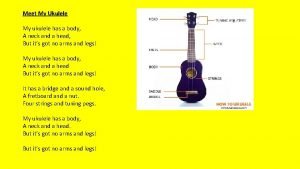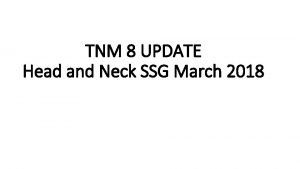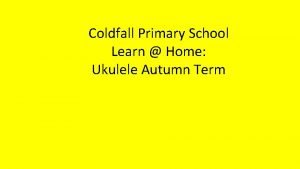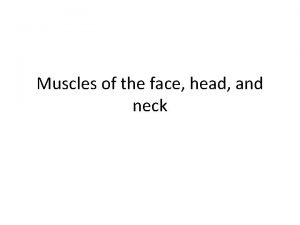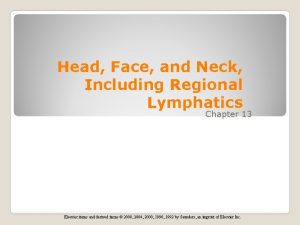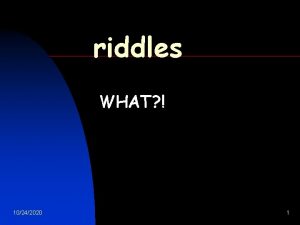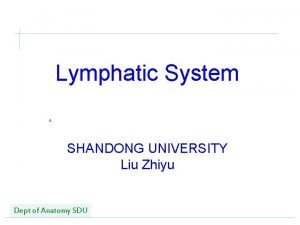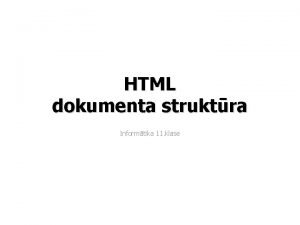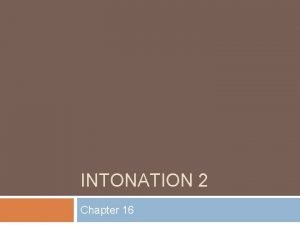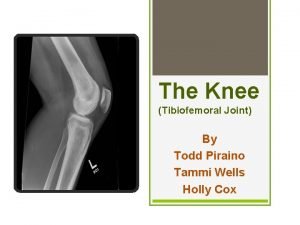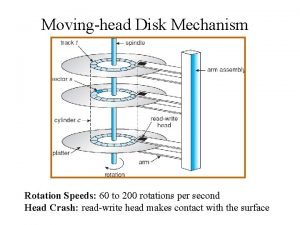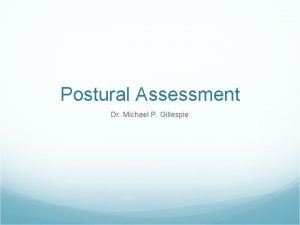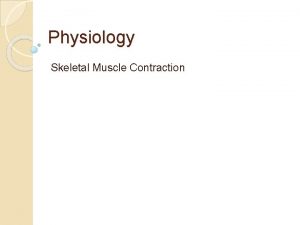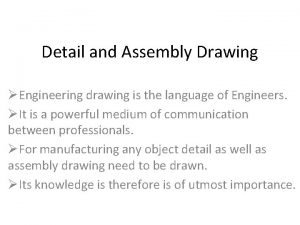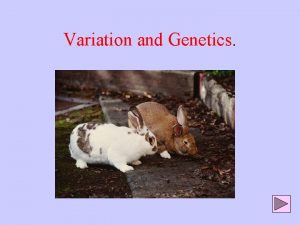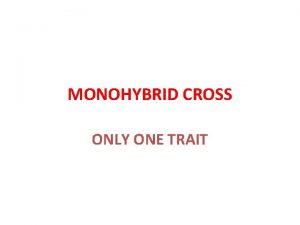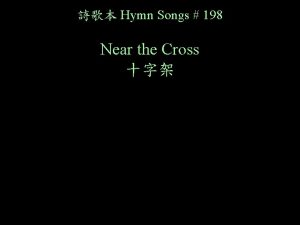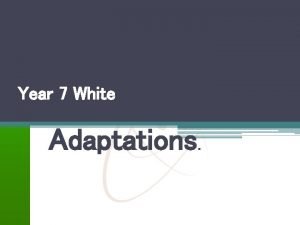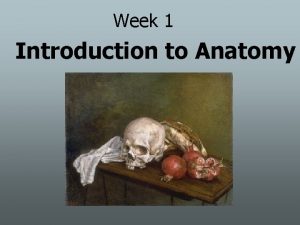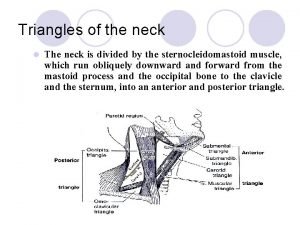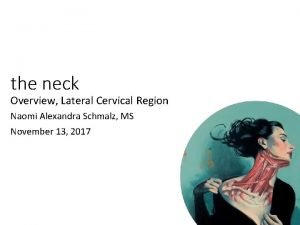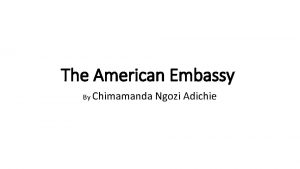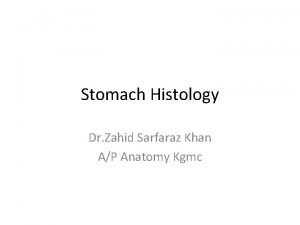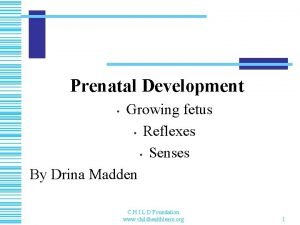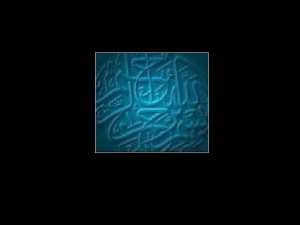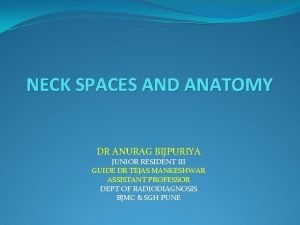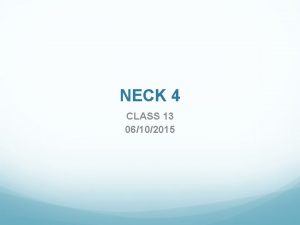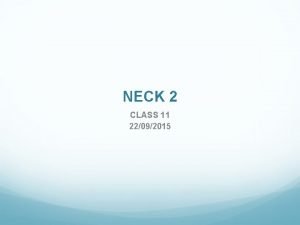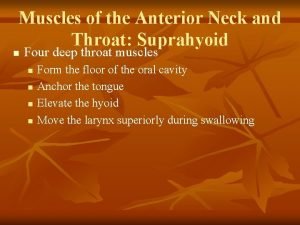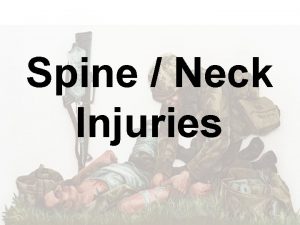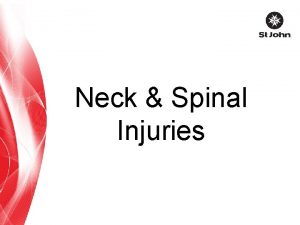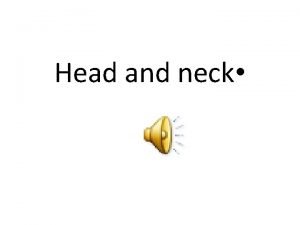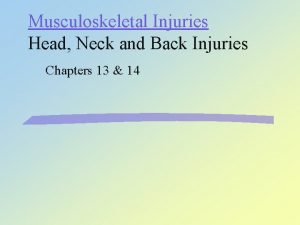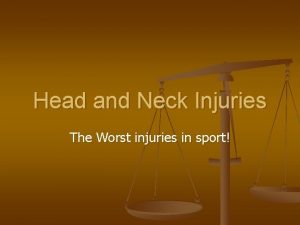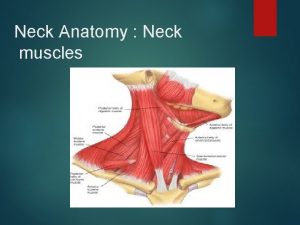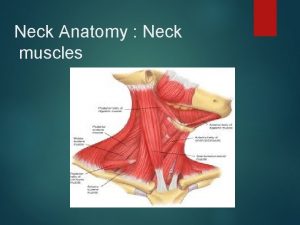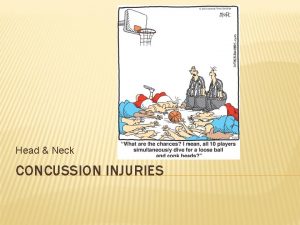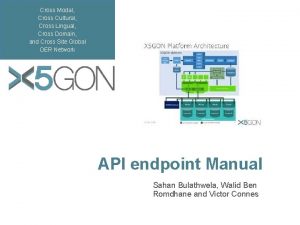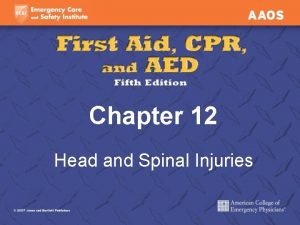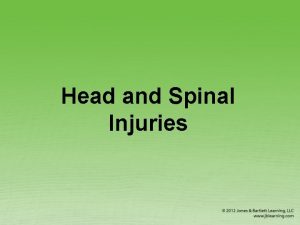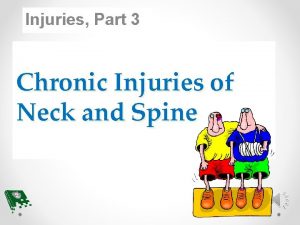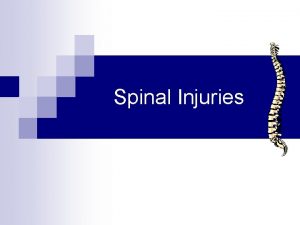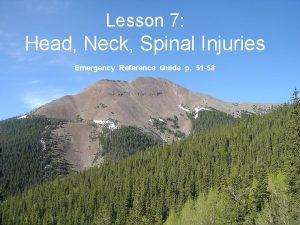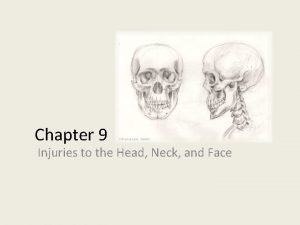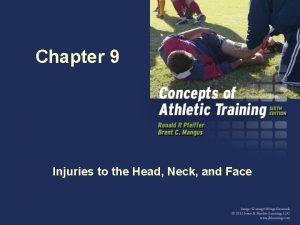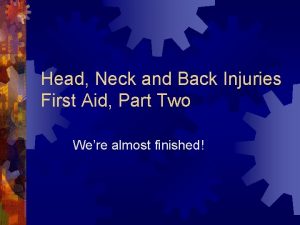Upper Cross System Head Injuries Neck Injuries Upper













































- Slides: 45

Upper Cross System Head Injuries & Neck Injuries

Upper Cross System • When a chain reaction evolved muscle shortening and reciprocal weakening in predictable patterns causing predictable imbalances or “syndromes”:

Upper Cross System Imbalances Weak Muscles Rhomboids Serratus Anterior Low/Mid Trap Tight Muscles Pectoralis Major/minor Levator Scapula Stenomastoid Upper Trapezius

Changes due to Lower Cross System • Occiput and C 1/2 hyperextend with the head pushed forward • Lower cervical to 4 th thoracic vertebrae are stressed through posture • Rotation and abduction of the scapulae • Altered direction of the glenoid fossa – Results in the need for humeral stability (increases levator and upper trap activity & supraspinatus)

Cervical Spine Forces • A) Absolute rotation angle (ARA) of overall lordosis magnitude. B) Relative rotation angle (RRA) or magnitude of intersegmental angle. C) Linear measure of forward displacement of head relative to upper dorsal spine

Results of Postural Imbalance • Greater cervical segment strain with possible referred pain to the chest (“trigger points”) – Pain mimicking angina may be noted • Rotator Cuff strain/tendonitis • TMJ • Lower Cross System may occur due to eye gaze – In order to see straight ahead, individual must anteriorly tilt pelvis • Breathing dysfunction – reduce in diaphragmatic efficiency due to postural restriction of lower rib cage

Head Evaluation and Treatment

Boney Anatomy • The Skull has many specialized areas. We sill focus on Major areas – – Frontal Parietal Temporal Occipital

Special Boney Areas • External Occipial Protuberance (notch in occipital area • Mastoid Process (behind Ear) • Zygomatic Arch (Cheekbone) • Orbit (eye socket) • Maxilla (upper jaw) • Mandible (lower Jaw)

Anatomical Locations of Cranial Nerves

Meninges Bone/Skull Dura Mater Pia Mater Cerebral Cortex Arachnoid Mater

Protection of Brain and Spinal Cord • Protection is through the bony anatomy and the MENINGES – Dura Mater A very tough and thick covering (highly vascular between dura mater and bone (aterires here) – Arachnoid: The subarachnoid space exists between arachnoid and pia mater and is C. S. F. and passage for veins in the cranial cavity(veins in this area) – Pia Mater: a thin and “invisible” covering attached intimately to the neural structures

Head Injury Background • Skull - Hard casing with pudding like substance inside – Protected by coverings – Nutrients by rich blood supply – Neural Components at base of skull

Head Injury • Mechanism – Coupe – Contra-Coupe • These mechanisms can cause injury and swelling: – Concussion – Epidural/subdural Hematoma

Bleeding in the Brain

Assessing Head Injury • Check – Visual Acuity & eye movement – Facial movement – Headache – ringing in the ears – Nausea – Behavioral Changes (unlike normal personality) – Amnesia (retrograde/ postconcussive) • MUST SIT OUT 20 MINUTES AND REASSESS – If symptoms increase send to emergency • This is a limited list

Head Injury • First Degree – No Concussion - Bell rung resolution of symptoms within Lucid Interval • Second Degree – Loss of Consciousness brief less than 15 seconds. No resolution within lucid interval • Third Degree – Loss of Consciousness more than 15 seconds – increasing severity within lucid interval • This is only one type of scale many variations

Post-Concussive Syndrome • Residual symptoms post concussion including – – Nausea Headache Tinnitus etc. • These may occur with movement, daily activities, rising from bed etc. • Must not participate during this period of time

Second Impact Syndrome • Injury while still recovering from initial concussion • 100% morbidity • Very important that post-concussive syndrome has resolved

Decisions on Head Injuries • MUST SEND TO EMERGENCY IF: – Blood out of ears &/or nose (from blow to head) – Any unconscious episode – Symptoms increase during 20 minute waiting period or when activity resumes • DO NOT RETURN TO ACTIVITY IF: – Symptoms are not resolved – Activity exacerbates headache

Blood Supply to the Brain • CSF is main nutrition to the neural structures. • Blood supply to the brain is via a paired arteriole system – Two internal carotid arteries enter the brain through the neck – Two vertebral arteries travel up the posterior aspect of the neck through the transverse foramen and at the level of the pons. This then becomes the basilar artery. – The basilar will nourish the pons and the cerebellum along the way to the area of the midbrain where it will divide into the posterior cerebral arteries

Athlete Return to Activity • First Concussion 1º – 1 week post resolution of Symptoms • Second Concussion or 2º • Third Concussion or 3º – End of Season needs discussion of career • Start with bike activity - if no symptoms – 1 month post resolution of symptoms increase functional activity before full return • Above subject to Dr Discretion

Circle of Willis • Two communicating links exist: – Posterior communicating artery links the posterior and middle cerebral arteries’ – The anterior communicating artery unites the two anterior cerebral arteries

Circle of Willis – 1. Anterior Cerebral Arteries – 2. Inter-Carotid Arteries – 3/5. Middle Cerebral – 4. Posterior Communicating Arteries – 6/7. Posterior Cerebral Arteries – 8. Basilar Arteries – 9. Vertebral Arteries

Where the Head Ends and Neck Begins • Plane between the external occipital protuberance and inferior surface of the mandible • Neck – Anterior triangle is bordered by Mandible (above), Cervical midline(laterally) and Sternomastoid (anteriorly

Where the Head Ends and Neck Begins • Neck – Posterior triangle is bordered by Clavicle (below), trapezius (posteriorly) and Sternomastoid (anteriorly)

Arteries Middle Cerebral Artery Posterior Cerebral Artery ICA Anterior Cerebral Artery

Neck Anatomy, Evaluation and Treatment

Boney Anatomy of the Neck • Typical Vertebrae are C 3 -C 6 • Characteristics – Small bodies with large vertebral foramen – bifed spinous process – foramen in each transverse process – articular facets lie at 45° in transverse plane • Atypical Vertebrae – Atlas - 1 st cervical vertebrae – Axis - 2 nd Cervical Vertebrae

Atlas • Has a short anterior and long posterior arch • Atlas has no actual body • Has Circular facet (Fovia Dentis) in the anterior arch which is for the articulation of the dens of C 2

Atlas/Axis Ligaments • Anterior Atlanto-Axial and atlanto-Occipital Ligaments – Lie on the anterior surface of the axis and passes to the anterior surface of the anterior arch of the atlas and onto the tubercle of the occiput This is an extension of the anterior longitudinal Ligament

Atlas/Axis Ligaments • Posterior Atlanto. Axial and atlanto. Occipital Ligaments – Extends for the lamina of the axis to the posterior arch of the atlas and on up to the occiput.

Atlas/Axis Ligaments • Tectorial Membrane – Extends on the posterior aspect of the body of the axis covering the dens and its associated ligaments but not touching it. It continues up to the anterior edge of the foramen magnum

Axis Anatomy • Second Cervical Vertebra Lateral View Overhead View – DENS which is fused body of the atlas and axis – helps in the formation of the first intervertebral foramen which the second cervical nerve passes through

Axis Anatomy • Cruciform Ligament Lateral View Odontoid Anterior View – Most vital of the ligaments. IF consists of 2 ligaments (Apical & Alar) which cross. – Apical: Attaches the tip to the occiput – Alar: Also attaches to occiput – Transverse lig: over apical but does not attach to it

Jefferson Fracture “Burst Fracture” • Etiology: – Axial Loading of the head/compression of the atlas between occiptial condyles • Pathology – Bilateral burst fracture of both the anterior and posterior arched of C-1 with lateral displacement of masses - increasing the distance between anterior arch of the atlas and odontoid process of axis (> 3 mm). AN UNSTABLE INJURY WITHOUT SPINAL CORD TRAUMA

Avulsion “teardrop” Fracture (Axis) • Etiology: – Hyperextension • Pathology – Triangular shaped avulsion fracture of the anterior-inferior margin of the C-2 vertebral body at the insertion of the anterior longitudinal ligament

Teardrop Fracture (vertebral Body) • Etiology: – Axial Loading/compression and Flexion “Buckling” • Pathology – A “Burst” fracture of the vertebral body with associated rupture of the posterior ligament, posterior displacement of the posterior fracture fragment and spinal cord encroachment “acute anterior spinal cord injury syndrome” TYPE IV compression fracture

Fractures of Neural Arch • Etiology – Axial Loading/flexion or extension “buckling” • Pathology – Unilateral or bilateral fractures of the lamina and/or pedicles – Avulsion fracture of the spinous process usually involving C-6, C-7 (most common)

Unilateral Facet Subluxation/Dislocation • Etiology – Axial Loading/flexion-rotation • Pathology – Rupture of the anterior and posterior ligaments, capsular ligaments (bilateral) and intervertebral disc with anterior subluxation (less than 50% of vertebral body) or dislocation (more than 50% of vertebral body/”locked facets). An unstable injury

Atlantoaxial Subluxation/Dislocation • Etiology – Flexion or axial loading/flexion “buckling” • Pathology – Rupture of transverse and alar ligaments with anterior dislocation of C-1 on C-2/increase in ADI (distance between anterior arch of atlas and odontoid process of axis greater than 3 mm)

Fracture of Posterior Arch (atlas) • Etiology – Extreme hyperextension or axial loading/compression of the atlas between the occipital condyle and the axis • Pathology – Fracture of the posterior arch , most commonly at the thin, weak junction. Possible associated fracture including pedicle of C 2 (hangman’s fracture) avulsion “teardrop”fracture of the axis etc.

Odontoid Fractures (Axis) • Etiology – Axial Loading/Compression shearing forces • Pathology – Type I - Avulsion fracture (Alar ligament) of the tip of the odontoid unstable – Type II - Fracture at the junction of odontoid and body of axis (unstable – Type III - Fracture of the body of the axis (unstable)

Hangman’s Fracture • Etiology – Hyperextension or axial loading/extension “Buckling” • Pathology – A bilateral arch fracture of C-2 (traumatic spondylolysis) with anterior dislocation of C-2 and C-3 (spondylolithesis) An unstable injury

Face Injury - La. Forte Fracture • La. Forte I: • La. Forte III
 Muscular system assignment
Muscular system assignment Rash on upper chest and back
Rash on upper chest and back Fractuer
Fractuer Thumb brush strum
Thumb brush strum Tnm 8 head and neck
Tnm 8 head and neck Risk factors of head and neck cancer
Risk factors of head and neck cancer This is home ukulele
This is home ukulele Zygomaticus major and minor muscle
Zygomaticus major and minor muscle Regional write up head face and neck
Regional write up head face and neck What has a neck but no head
What has a neck but no head A short backboard or vest-style immobilization
A short backboard or vest-style immobilization Chapter 21 caring for head and spine injuries
Chapter 21 caring for head and spine injuries Holds the head of the machine
Holds the head of the machine Lymph nodes in lower leg
Lymph nodes in lower leg Dividing head chart
Dividing head chart The attacking firm goes head-to-head with its competitor.
The attacking firm goes head-to-head with its competitor. Tagi html
Tagi html Moving head disk mechanism in os
Moving head disk mechanism in os Parts of the head
Parts of the head What is a tonic syllable
What is a tonic syllable Flood suction pump
Flood suction pump Biceps femoris innervation
Biceps femoris innervation The tone unit
The tone unit The head of moving head disk with 100 tracks
The head of moving head disk with 100 tracks Upper cross syndrome
Upper cross syndrome The phenomenon of rigor mortis is a direct result of
The phenomenon of rigor mortis is a direct result of Cross bridge muscle
Cross bridge muscle Engineering graphics
Engineering graphics Test cross and back cross
Test cross and back cross Test cross and back cross with example
Test cross and back cross with example Incomplete dominance phenotype example
Incomplete dominance phenotype example Difference between monohybrid and dihybrid cross
Difference between monohybrid and dihybrid cross In the cross, in the cross be my glory ever
In the cross, in the cross be my glory ever Incisal guidance
Incisal guidance Structural adaptations frilled neck lizard
Structural adaptations frilled neck lizard Torso organs
Torso organs L
L Cervical lymph nodes
Cervical lymph nodes American embassy chimamanda ngozi adichie
American embassy chimamanda ngozi adichie Parietal cell histology
Parietal cell histology Neck righting reflex
Neck righting reflex Posterior triangle of neck
Posterior triangle of neck Neck space
Neck space Neck level 1b
Neck level 1b Subhyoid bursitis ppt
Subhyoid bursitis ppt Neck throat anatomy
Neck throat anatomy
